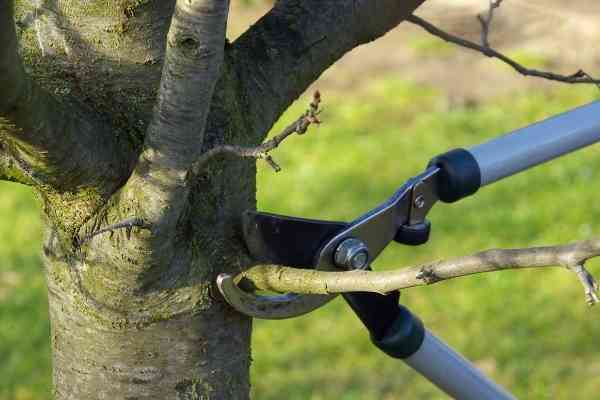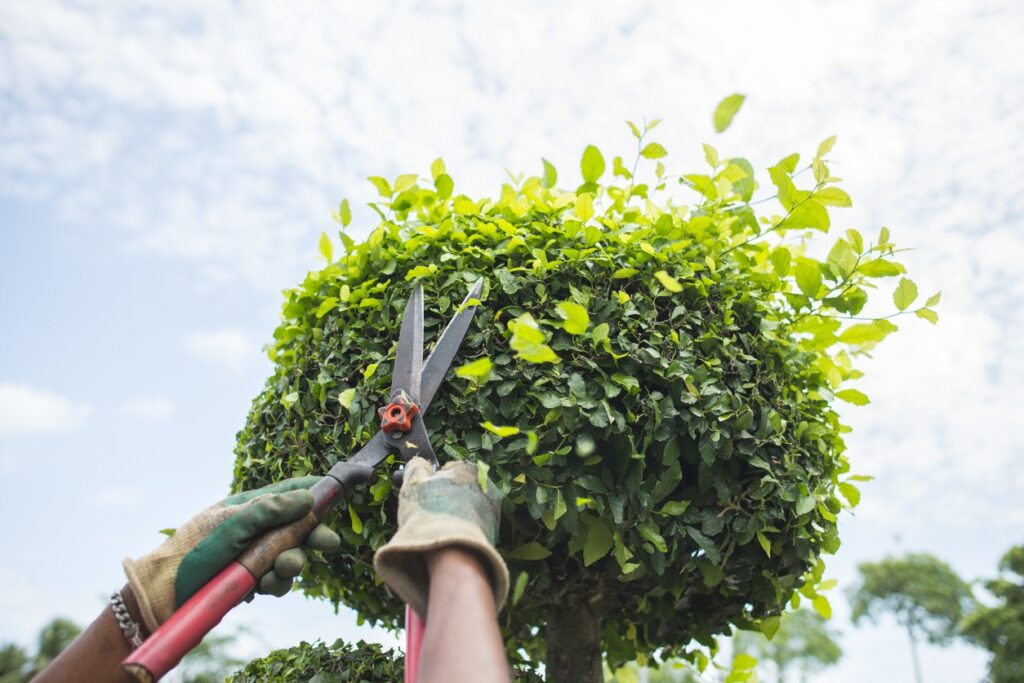When Is The Best Time To Trim Trees
Optimal Tree Trimming Timing

Are your trees growing out of control? Do their branches seem to reach the sky, obstructing sunlight and posing potential hazards? If so, you’re not alone. Many homeowners grapple with deciding when to trim their trees for optimal growth and safety. Tree trimming is an essential practice. Still, timing is crucial in ensuring these majestic plants’ health and longevity. In this blog, we’ll explore the age-old question that has puzzled many green thumbs and arborists: “When is the best time to trim trees?” Join us on this journey of discovery as we unravel the mysteries behind the ideal moment to give your trees the trim they need to flourish.

What Is Tree Pruning?
Tree pruning, a vital horticultural practice, plays a pivotal role in maintaining the health and aesthetics of your trees. It involves the careful and selective removal of specific parts, like branches, buds, or roots, to serve multiple purposes. By improving the tree’s structure, pruning encourages healthy growth and enhances its visual appeal, making your garden a picturesque paradise. Moreover, this practice is instrumental in eliminating dead or diseased branches, reducing the risk of hazardous falling limbs that could damage your property or harm people. Additionally, shaping the tree to suit its environment ensures a harmonious blend between nature and your landscape. Proper pruning can keep your trees flourishing and your surroundings safe, beautiful, and serene.
Differentiating Between Tree Trimming and Tree Removal
It’s important to distinguish between tree trimming and tree removal, as they serve different purposes in tree maintenance:
Tree Trimming
Trimming is a common tree maintenance practice that involves selectively cutting back overgrown branches. This process is often undertaken for various reasons, including aesthetic enhancements, shaping the tree’s appearance, and promoting healthier growth. Regular trimming prevents branches from becoming too heavy and susceptible to breaking, especially during storms or heavy winds. A tree can maintain a balanced structure by removing excessive growth, enhancing its overall health and vitality. Additionally, trimming can create a safe distance between tree branches and nearby structures like homes and power lines, reducing potential hazards.
Tree Removal
On the other hand, tree removal is more drastic, necessitated in specific situations. Removal becomes the only viable option when a tree is dead, severely diseased beyond recovery, structurally compromised, or poses a significant safety risk due to its proximity to structures or power lines. Undertaking tree removal is a complex and potentially hazardous task that should only be executed by experienced professionals. These experts possess the knowledge, skills, and specialized equipment required to safely fell and remove a tree without causing damage to surrounding property or endangering lives.
The Importance of Tree Pruning
Before deciding the best time to trim trees, let’s explore why tree pruning is essential. Pruning serves multiple purposes, all of which contribute to the long-term health and vitality of your trees:
Health Enhancement: Regular pruning helps eliminate dead, diseased, or weak branches that can compromise the tree’s health. Removing these branches prevents the spread of diseases and pests, enabling the tree to allocate resources to healthy growth.
Structural Integrity: Pruning can improve the tree’s overall structure by removing crossing or competing branches. This ensures the tree grows with a strong central leader and well-spaced branches, reducing the risk of breakage during storms.
Aesthetic Appeal: Pruning can enhance the visual appeal of trees by promoting a balanced canopy, natural shape, and proper growth. Well-maintained trees contribute to the overall beauty of your landscape.
Safety: Removing hazardous branches that are too close to structures, power lines, or pedestrian areas reduces the potential risks associated with falling limbs.
General Guidelines for Tree Pruning
Before delving into the best timing for tree pruning, it’s essential to understand some general guidelines for the pruning process:
Avoid Over-Pruning: Excessive pruning, known as “topping,” can weaken trees and rapidly regress weak, poorly attached branches. It’s crucial to prune conservatively and only remove what’s necessary.
Use Proper Tools: Use the right tools, such as sharp and clean pruning shears or saws. Using dull tools or incorrect techniques can damage the tree.
Know Your Tree Species: Different tree species have different growth patterns and requirements. Familiarize yourself with the specific needs of the trees in your landscape to make informed pruning decisions.
Consider Professional Help: For large trees or complex pruning tasks, hiring a certified arborist is advisable. They have the expertise to assess the tree’s health and provide proper pruning recommendations.
Best Time for Tree Pruning
The optimal timing for tree pruning can vary based on several factors, including the tree species, the goal of pruning, and the local climate. However, some general guidelines can help you determine when to schedule your tree pruning:
Winter Pruning
The dormant winter season, when trees have shed their leaves, is often considered an ideal time for pruning. This period, typically from late fall to early spring, offers several advantages:
- Visibility: Without leaves, the tree’s structure is more visible, making it easier to identify the branches that need attention.
- Disease Prevention: Many diseases and pests are less active during winter, reducing the risk of infestations after pruning cuts.
- Resource Allocation: Since trees aren’t actively growing during winter, and they allocate fewer resources to wound closure. This can reduce stress on the tree and promote quicker healing in spring.
Spring Pruning
Early spring, just before new growth begins, is another suitable time for pruning. This period offers its own set of benefits:
- Faster Healing: As trees start their growth phase, they can quickly heal and close pruning wounds, minimizing the risk of disease or insect entry.
- Less Impact on Growth: Pruning before the growth season ensures the tree’s energy is directed toward the remaining branches and new growth.
- Assessment of Winter Damage: Spring pruning allows you to assess and address any damage caused by winter weather.
Summer Pruning
Pruning during the active growing season, particularly in late spring or early summer, is suitable for specific situations:
- Shaping and Directing Growth: Summer pruning can help direct growth by removing unwanted branches and encouraging growth in desired directions.
- Flowering Trees: If your tree blooms in late spring or summer, pruning immediately after flowering can help maintain its shape without sacrificing next year’s blooms.
- Diseased Branches: Removing diseased branches promptly during the summer can prevent the spread of infections.
Fall Pruning
Fall is generally not recommended for extensive pruning as trees prepare for dormancy. However, if necessary, light maintenance pruning to remove dead or weak branches can be done.

Tree-Specific Timing
In addition to considering the season, it’s essential to be aware of the specific needs of the tree species in your landscape:
Deciduous Trees: These trees lose their leaves in the fall, making winter a prime time for pruning. Prune before new growth emerges in spring.
Coniferous Trees: Evergreen trees can be pruned in late winter or early spring before their new growth begins.
Flowering Trees and Shrubs: Timing depends on whether they bloom on old or new wood. Research the specific species to determine the best time for pruning without affecting flowering.
Fruit Trees: Prune fruit trees during the dormant season to shape and remove dead wood. Light summer pruning can also help manage growth.
Signs Your Tree Needs Immediate Pruning
While understanding the right time to trim trees is crucial, recognizing when a tree requires immediate attention is equally important. Regular observation of your trees can help you identify signs that pruning is necessary to ensure both their health and the safety of your property.
Dead or Diseased Branches: If you notice branches with no leaves or with signs of disease, such as discoloration, cankers, or fungus growth, it’s essential to remove them promptly. These branches can spread diseases and weaken the overall tree structure.
Overhanging or Hazardous Branches: Branches too close to power lines, buildings, or pathways can pose a risk. Trimming these branches enhances safety and prevents potential damage during storms.
Crossing or Rubbing Branches: Branches that rub against each other create wounds that invite pests and diseases. Pruning such branches reduces the chances of these problems and helps maintain the tree’s shape.
Weak or V-Shaped Unions: Branches with weak attachments can easily break during heavy winds or ice. Pruning these branches prevents potential accidents and allows the tree to develop a more robust structure.
Excessive Canopy Density: An overly dense canopy can limit air circulation and sunlight penetration. Pruning to thin out the canopy promotes better air and light distribution, leading to healthier growth.
Now that you know the best time to trim trees, it’s time to get out there and take charge of your landscaping. Remember, timing is everything when it comes to tree trimming. Before reaching for those pruning tools, consider the species, weather conditions, and objectives. By trimming your trees at the right time, you can promote healthy growth, ensure safety, and enhance the overall beauty of your outdoor space. So, don’t let your trees become unruly and unmanageable; take control today! Proper trimming can work wonders if you ensure your property’s safety, enhance aesthetics, or foster better tree health. Start planning your tree-trimming adventure now, and let your garden flourish like never before! Happy trimming!
